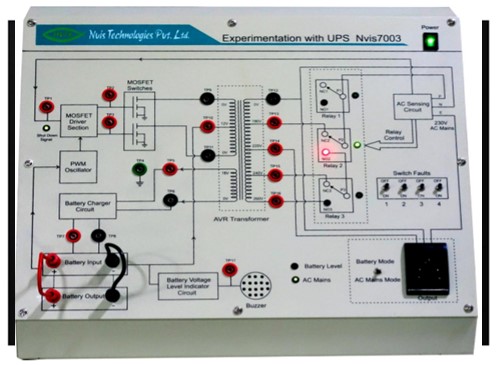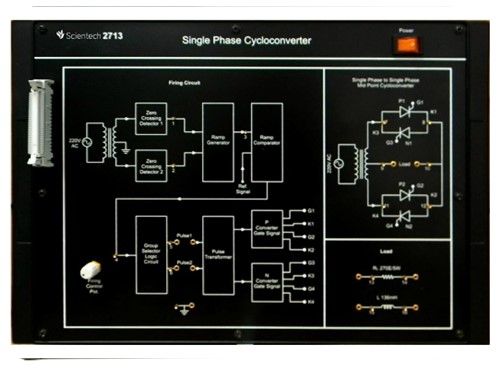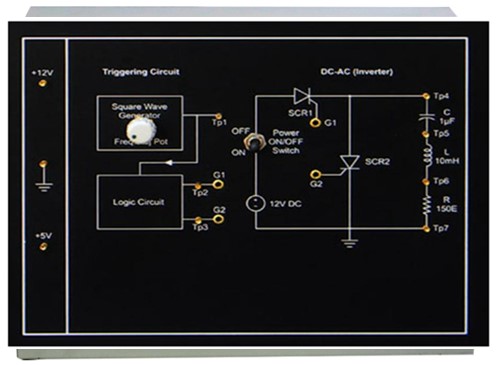Power Electronics Lab
|
Objectives: The lab aims at imparting practical knowledge of Power Electronics to the students at various levels i.e. DEPM, B.Tech and M.Tech. It is accordingly well equipped with equipment’s and trainer kits to teach practical from fundamentals to high level concepts to the students.Learn the characteristics of different types of power electronic device understand and analyze the operation of controlled rectifiers, choppers & inverters. |
|
| Main Equipment’s Available | |
|
1. Experimentation with UPS All Components are terminated with a connector for the study of Students. One potentiometer is provided to vary the firing angle of SCR. Another potentiometer is provided to varUPS equipment provides power conditioning, power regulation and, in case of power outages, provides the crucial backup power needed for an orderly shutdown of computer processes and files. UPS are also used for emergency power supplies for Hospitals, data centers, municipalities, industrial and commercial centers to supply power in case of power failure from main supply authority the firing angle of TRIAC. |
 |
|
|
2. Series Inverter
Two thyristors are used to produce two halves at the output. The commutating elements are connected in series with the load R to form the R-L-C circuit. The values of L and C are chosen in such a way that they form an under damped circuit. This is necessary to form required oscillations. |
|
3. SCR Lamp Flasher : Scientech PE40 SCR Lamp Flasher is compact, ready to use experiment board for lamp flasher using SCR circuit. This board is useful for students to study and understand operation of SCR controlled lamp flasher circuit and measurement of frequency, time, and voltage. Some of the Practical project experiments.
|
 |
 |
4.Single Phase cycloconverter
A cycloconverter or cycloinverter converts an AC waveform to another AC waveform of a lower or higher frequency. They are used in three phase applications. The amplitude and frequency of input signal of cycloconerter tend to be fixed values, whereas amplitude aand frequency of output signal is variable for cycloconverters.
|
|
5. Parallel Inverter A parallel inverter is used to produce a square wave from DC supply. Basically, by alternatively switching two thyristors, the DC source is connected in alternative sense to the two halves of the transformer primary thereby inducing a square-voltage across the load in the transformer secondary. In this inverter commutating capacitors come in parallel with the load during the operation of the inverter. |
 |
 |
6. SCR Triggering Trainer: SCR trigger trainer system. UJT triggering circuit24Volt 10W Lamp load24 Volt ac supply for Circuit inputs LED indication for supply R-trigger circuit with phase angle control 5 degrees to 90 degrees R-trigger circuit half wave with phase angle control up to 180 degree maximum. UJT is an excellent triggering device which provides narrow gate pulses. Control is very accurate and from 0 Deg. to 180 Degree.
|
|
Some of the Practical project experiments.
|
 |
<













